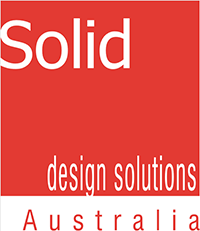PILOT BUILD PHASE
Once the Tool Build Phase is completed and the deliverables are approved by you, we’ll begin the Pilot Build Phase of the product development effort, this is where the new fixtures, assembly instructions and testing procedures are all used to produce the first production units of your new product. Having the engineers who designed the product, fully engaged in this process is critical to the successful transfer of the product design to production. The phase begins with ensuring that the project team has the correct resources assigned to complete the engineering tasks required to review assembly and test operations, inspect the products produced and coordinate the cycle, Drop, HALT and market testing of the first production assemblies. Our assigned Project Manager will document the detailed work packages by subsystem, and by engineering discipline, to build a detailed schedule for this phase. Then appropriate resources will be assigned. A phase kick-off meeting, coordinated by our Project Manager, signals the formal beginning of the phase ensuring that all team members have a full understanding of their responsibilities and of the requirements, schedule, scope and budget of the phase. As the detailed work tasks are performed our Project Manager will coordinate regular meetings with team members and key Stakeholders and formally report on the status of your program every other week with a written Status Report keeping you informed on progress, spending and issues.
The main goal for this phase is to verify that the product design and production processes are ready for production release. Depending on the product, these preparations may include creation of assembly instruction sheets, user instructions, product packaging design and testing, UL/CE/FDA/TGA as well as other agency testing requirements and documenting in-process testing strategies for manufacturing. Meetings with injection moulders, fabricators, contract manufactures, and other critical suppliers will be held to coordinate production start-up activity planning. In addition, production fixtures will be identified and designed to increase manufacturing quality where required and efficiency where possible.

To verify that the product is ready for market entry, a range of additional product testing is usually critical, remember that just because the prototype assemblies worked well, doesn’t mean that the production versions will too. In order to have statistically meaningful product performance and reliability data it is recommended that a minimum of 25 complete products be life cycle tested. For higher production quantity products, a larger sample size is needed to determine the mean time between failure (MTBF), identify root causes of failure modes and to perform market testing. Solid Design’s Project Manager will work with your team to determine the appropriate types of testing to perform and the quantities of product required for your product plans.
Standard deliverables for the Tool Build Phase often include:
- First production assemblies
- Audit and Inspection Reports
- Production Readiness Report
- Testing Reports for cycle, reliability, HALT and market testing
- Certification testing reports from UL/CE/FDA/TGA agency testing
- Packaging testing report
- Updated Software and Firmware source code
- Updated production costed bill of materials (BOM) based on multiple production quantity levels
- Updated Risk Assessment with mitigation and response strategies
- Detailed plan, schedule, scope and budget for the next phase
Next: Production Phase of Product Design
Solid Design leverages a proven process to bring new ideas to reality. Our process is a phased approach which is shown graphically below, and this will be tailored to fit the requirements specific to your product design, development and testing needs. Simply click on any of the process phases to see a detailed description of the tasks and potential deliverable of that phase.

